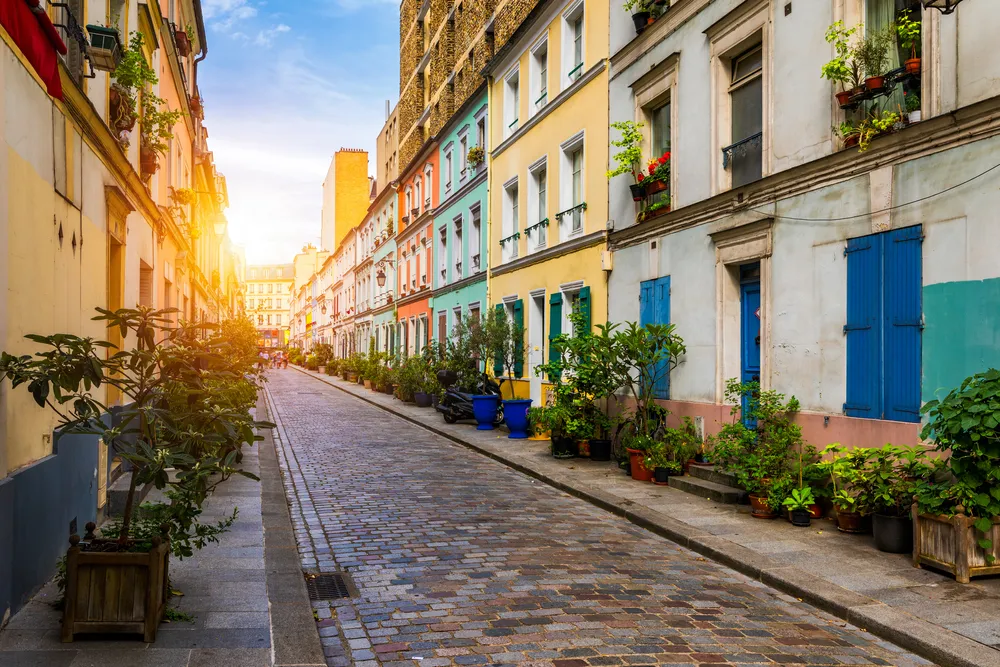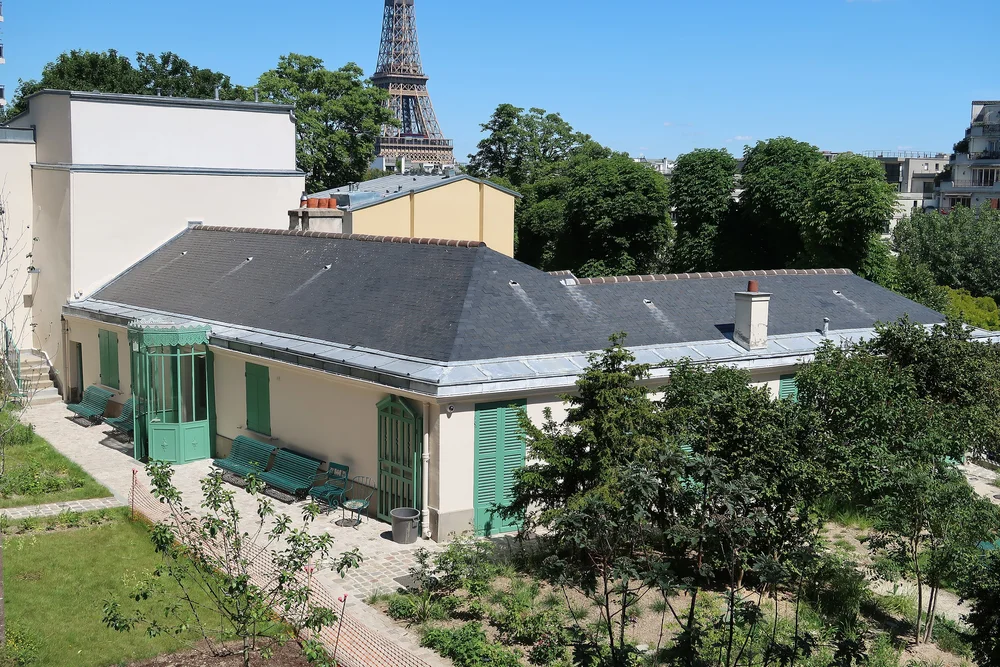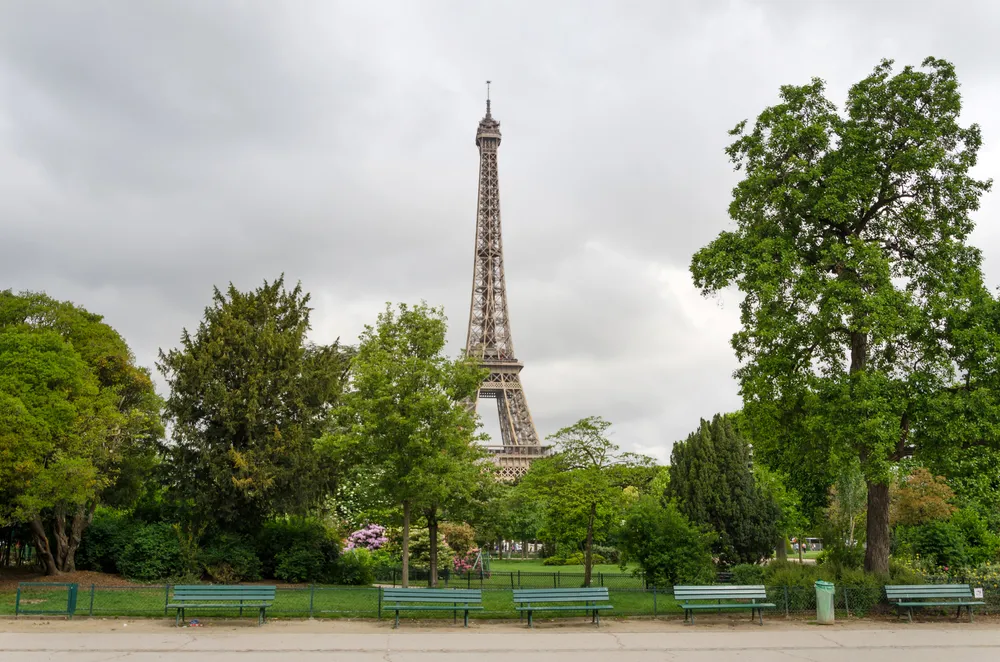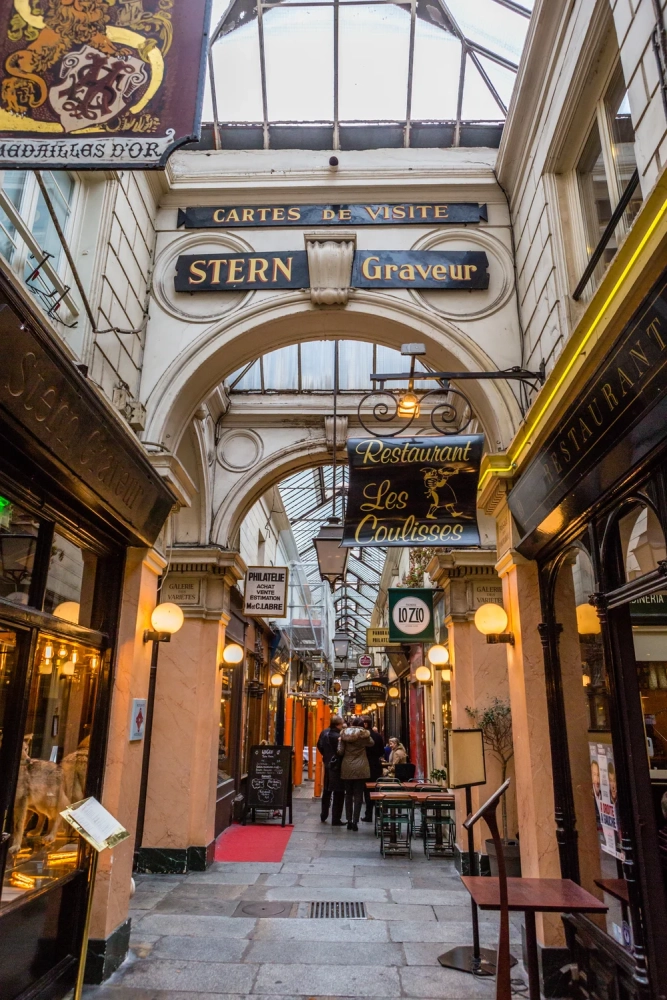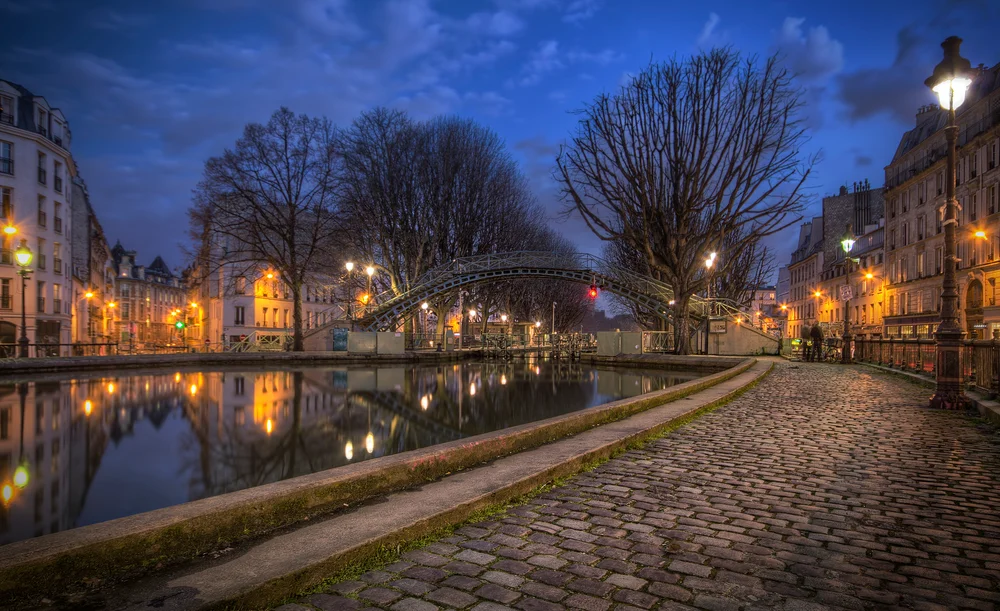Paris on a Budget: 10 Ways to Save Money When You Visit
10 min readWe’re experts in budget travel here at Kiwi.com, so in this series, we’re looking at the 10 most expensive destinations in the world and providing you with handy guides on how to see those places on the cheap. This time we’re off to France to see how you can make the most of your time in Paris.
“I love Paris in the springtime, I love Paris in the fall” crooned Frank Sinatra, so he clearly loved taking a bit of a gamble on the weather. June through August is the time to go if you want great weather, but it’s also the busiest time of the year tourist-wise.
Winter is not a bad choice if you fancy a long weekend exploring the Christmas markets, but bring warm clothes as the city only gets around 10 sunny days in December.
Our tips would be May or September — in May the city’s parks and gardens are in bloom, and in September the main tourist season is coming to an end but you’ll still get the golden glow of sun and long, warm evenings.
From Paris Charles de Gaulle
From Paris Charles de Gaulle airport the options are either train or bus, varying in both time and cost. The RER train is the quickest, calling at both stations at the airport and getting you to the center of Paris in around 40 minutes at a cost of €11.40. The stations are mildly annoying to get to, being around a ten minute walk from the terminal exits
Buses, meanwhile, are slower but cheaper. Public buses 350 and 351 depart every 15 — 30 minutes between 06.05 and 22.30 and cost just €1.90. The trade-off is that the journey is twice as long (70 — 80 minutes) and, of course, they’re just regular public buses so don’t have much space for luggage.
From Paris Beauvais
The airport itself recommends the Aérobus service, taking around an hour and 15 minutes to drop customers at Porte Maillot for €16.90. There are trains, but that involves getting a bus or taxi to Beauvais railway station and paying €16 on the day (cheaper if you buy in advance). The train journey takes the same time as the shuttle bus, plus you have the hassle of getting to the station in the first place.
From Paris Orly
The closest airport to the center of Paris, Orly is accessible on the RER B line (35 minutes, €14.90) or the OrlyBus shuttle service (30 minutes, €11.50). Cheaper options involve taking RER C and changing to bus 183 (50 minutes, €7.50) or tram T9 and bus 183 (one hour, €4.65). As ever, it’s a toss-up between time and cost.
[embedded content]
1. Save money on public transport
The Paris public transport network is a bit of a minefield of costs, zones, timings and the like. Case in point: a single trip by Metro, bus, or tram within Zone 1 only (basically the region within the Boulevard Périphérique ringroad when you look on a map) costs €2.15, whereas a 1-Day Pass for Zone 1 and Zone 2 (more than enough for your needs, probably) is €8.65 and adds suburban commuter rail to the deal.
Weekly passes for the same thing cost €30.75, while if you’re under 26 years of age (a number that’s important in Paris, as we’ll later see) you can get a single day weekend travel pass for Zones 1 — 3 for a mere €4.70.
The easiest way to buy tickets is, in fact, slightly clunky. You’ll need the Bonjour RATP app to buy tickets and get access to maps and the journey planner, but you also need the My Navigo Tickets app to store your tickets in. The RATP app will guide you into doing this, but it still all feels a bit clumsy. Regardless, it’s still the best way to do it.
[embedded content]
2. Try a free walking tour
To get acquainted with Paris if you’ve never been — or to delve deeper into an area or topic you’re into — get yourself on one of the many free walking tours available.
You could choose a part of the city — Montmartre, the Latin Quarter or Le Marais, for example. Or maybe something related to its history, such as Paris in the war, famous myths and legends, or the city’s literary history.
You can even dive into something a little more obscure, such as film and TV locations, Paris in paintings, or the history of Judaism in the city. For an extra charge, you can even add an element such as a chocolate tour, a baked goods tour, or a pub crawl. What you choose to spend (and on what) is completely up to you!
3. Best free spots to take photos in Paris
Sure, Paris is a great place for the ‘Gram, but so many of the sights have been done. Montmartre? Tick. Arc de Triomphe? Done. But have you heard of the Rue Crémieux?
It’s a narrow, cobbled street in the 12th Arrondissement whose houses are all painted in lively pastel colors with cute wooden shutters and pretty front doors. Take a wander down and see what you can see. We should add, however, that people live here, so if you do go there, please be respectful and quiet: don’t peer into windows or take photos of people who don’t want to be in them.
Otherwise head to the Café de Flore (overpriced menu, Emily in Paris, but a classically Parisian exterior), Au Vieux Paris d’Arcole (old, tourist trap, but another stunningly French facade), the lame-in-a-cute-way “I Love You” wall at Jehan Rictus Square, the Art Nouveau Pont Alexandre III or, for a mere €3 entry fee, try the courtyard of the the Grand Mosque of Paris in the Latin Quarter. This truly is a hidden gem, with beautiful fountains, tilework and climbing plants. It’s open daily except Fridays and Muslim holidays.
4. Cheap and free museums in Paris
Similar to the walking tours listed above, Paris has museums dedicated to pretty much anything and everything.
The basic facts are these: all museums are free for EU citizens under 26 years of age (and everyone under 18). If neither of those criteria applies to you, wait for the first Sunday of every month when some of the big hitters (the Louvre, the Pompidou, the Musée d’Orsay, etc.) have their monthly free day — although due to their popularity, you’ll probably need to queue.
However the best thing to do is to explore some of the other free museums dotted around the city. They include:
Cernuschi Museum (Asian art and sculpture)
Musée d’Art Moderne de la Ville de Paris (20th-century art including works by Picasso, Giacometti, Matisse and others)
Maison de Balzac (the writer’s house, now a museum of his life and work)
Curie Historical Museum (Marie and Pierre Curies’ old laboratory and offices)
Musée de la Libération de Paris (the WWII liberation of Paris and former command bunker)
That’s just the tiniest selection of what’s on offer for absolutely no charge. Pretty amazing.
5. Embrace the outdoors
Although Paris has a bit of a reputation for being a bit grey and smoggy, especially in the rain, when the weather is decent there’s nothing Parisians like more than heading to somewhere green. Try the Parc Monceau with its statues to various figures such as Frédéric Chopin and Guy de Maupassant and follies such as a Rialto-style bridge and curious little pyramid. How about Buttes Chaumont, a steep, hillside park featuring cliffs, waterfalls, grottoes and a dramatic rotunda? And for the most romantic picnic you’ll ever have, head to the Parc du Champ du Mars in the early evening with your cheese, bread and wine and wait for the Eiffel Tower light show to begin.
6. Literary Paris
Busy though it will be, stop by the famous bookshop Shakespeare and Company. Since 1951 this second-hand bookshop has been a site of pilgrimage for all lovers of literature that visit Paris, and has appeared in films like Before Sunset and Midnight in Paris.
It also offers poetry readings, book promos, talks and other things of that ilk, most of which are free and, if you really want to get involved, try and become one of their ‘Tumbleweeds’. When possible, you can spend a night sleeping between the shelves in exchange for helping out for a couple of hours in the shop or adding a one-page autobiography to their already-bulging archives, to which over 30,000 people have already contributed.
You can also try exploring the stores of the famous Bouquinistes, the booksellers with the green metal stands ranging along the banks of the Seine that have been a part of the Parisian cultural scene since the sixteenth century. Not these exact sellers, obviously. Come on, you know what we mean.
7. Windowshop in the passages
Don’t be tempted to spend any money at any of these places — you’ll see why — but you can indulge in a spot of lèche-vitrine (literally window licking) at one of Paris’ many 19th century shopping passages.
Les passages couverts are narrow and bright with elegant stone and wood carvings, the sun glinting through the skylights onto boutiques, cafes, patisseries and artisan workshops making and selling things that only people who could afford them would want. It’s nice to indulge your imagination though, and if the weather isn’t great it’s a nice way of getting a bit of elegance and Parisian style into your itinerary while staying out of the rain.
Try the Passage des Panoramas crammed with tiny, quality bars and shops selling antique stamps and vintage postcards; the clothing and jewelry stores of the Passage du Grand Cerf; the second-hand bookshops of the Passage Jouffroy. Even if you’re not buying, they’re a fascinating diversion.
8. The best view is free!
As you’ll probably have worked out, the top of the Eiffel Tower is A: not free to get to, and B: the only place in the city where you can’t see the Eiffel Tower. So how do you get a wonderful view of the city — for free — that includes all the major landmarks?
The answer is to be found at the Galeries Lafayette Haussmann. The beautiful, art nouveau shopping gallery at number 40, Boulevard Haussmann, contains pricey designer boutiques but a roof terrace which can be accessed for free. Not only do you get a spectacular panorama of the city including the Eiffel Tower, Opéra Garnier, Sacré Cœur and Notre Dame, but there’s also a rooftop bar in the summer months, plus a selection of pop-up restaurants (not free, obviously!). Sunrise, sunset, or during the day, it’s all of Paris in one place.
9. Meet me at the cemetry gates
I know that’s not how you spell cemetery, but it doesn’t work as a nod to the Smiths otherwise. Keats and Yeats might not be on your side, but Wilde certainly is, buried with other luminaries at the Cimitière du Père Lachaise.
[embedded content]
Now that clumsy, staggering intro is out of the way, let’s look at the facts: cemeteries are not everyone’s cup of tea, but there’s something about the peace and quiet that can be quite alluring. Simply walking between the stones marking the final resting places of Wilde, Édith Piaf, Jim Morrison, Marcel Proust, Georges Bizet and thousands of others gives you a chance to reflect on art, life, legacy and the fact you’re at large in this wonderful city.
Then you can go and have some cake or something.
10. It’s something else at night
One way you can get the real atmosphere of Paris is to experience it at night, but where to begin? We recommend staying close to the water.
Starting on the banks of the Seine around Île de la Cité, follow the river southeast past Île Saint-Louis until you hit the Canal Saint-Martin. This waterway continues for around four and a half kilometers past Place de la Bastille and into the area also known by the name of the canal. The waterway is covered for the first part of its length, creating wide boulevards and green spaces, while further up it emerges from its tunnel. Here, during the day, you’ll find people fishing and strolling in the sun, while at night, its illuminated iron bridges and canalside bars and restaurants attract crowds of people who want to hang out in this super-cool part of town.
Taking this route means you’ll see both sides of Paris: the beauty of the Île de la Cité with Bateaux Mouches sliding gently past, lit up and shimmering against the water, and the Paris that the locals so love.

